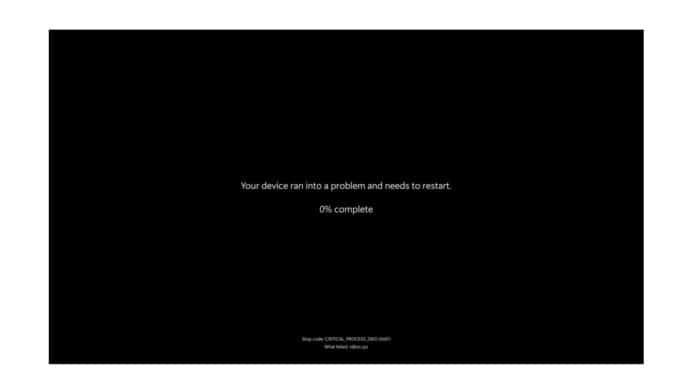After nearly four decades of delivering a flash of panic to Windows PC users everywhere, Microsoft is finally saying goodbye to its iconic Blue Screen of Death (BSOD).
With the rollout of Windows 11’s 24H2 update, the infamous blue crash screen is being replaced by a sleeker, more professional-looking version: the Black Screen of Death —part of a broader transformation by Microsoft that is designed to make Windows smarter, more stable, self-healing, and better equipped to troubleshoot when things go wrong.
What’s With The Black Screen?
Yes, it’s official. Microsoft’s new BSOD ditches the sad-face emoji and cluttered QR code in favor of a minimal black background with clean white text. You will still see critical error information like stop codes and the name of any offending system driver, but the overall design is more modern and aligned with Windows 11’s modern interface.
“The new UI is simpler, and more aligned with Windows 11’s design language. It removes the frowny face and QR code, and instead presents a short, readable message with the stop code and faulty driver information. We’ve also added a hex version of the stop code to make it easier to search for help – a common user request,” explains Microsoft.
While it may seem like a simple design update, it reflects a deeper shift in how Microsoft is looking to modernize and strengthen system recovery processes.
This change is a part of the company’s Windows Resiliency Initiative (WRI), a response to last year’s global tech meltdown when a flawed CrowdStrike update brought down millions of machines. From airport kiosks to supermarket registers, blue crash screens were everywhere.
Smarter Crashes, Faster Recovery
Besides the redesigned BSOD, Microsoft has also introduced a powerful new feature called Quick Machine Recovery (QMR). This behind-the-scenes tool automatically fixes boot failures when your PC can’t boot properly.
Instead of leaving you staring helplessly at a crash screen, QMR will now boot the system into Windows Recovery Environment (WinRE), connect to the internet, check online for known fixes, and try to fix the issue automatically—without any user action.
“Once enabled, the feature activates during critical boot failures. It uses the secure and connected Windows recovery environment to scan Windows Update for applicable fixes published by Microsoft. If a matching remediation for a widespread issue is available, it is applied automatically, restoring the device without requiring manual intervention,” added Microsoft.
Availability
Starting later this summer, all Windows 11, version 24H2 devices will receive the new crash screen for unexpected restarts, along with the general release of Quick Machine Recovery (QMR).
Further, QMR will be turned on by default for Windows 11 Home devices and can be configured by IT administrators in Pro, Education, and Enterprise editions through tools like Intune, ReAgentC.exe, or other supported policy tools. More customization options for QMR are expected to roll out later this year.

